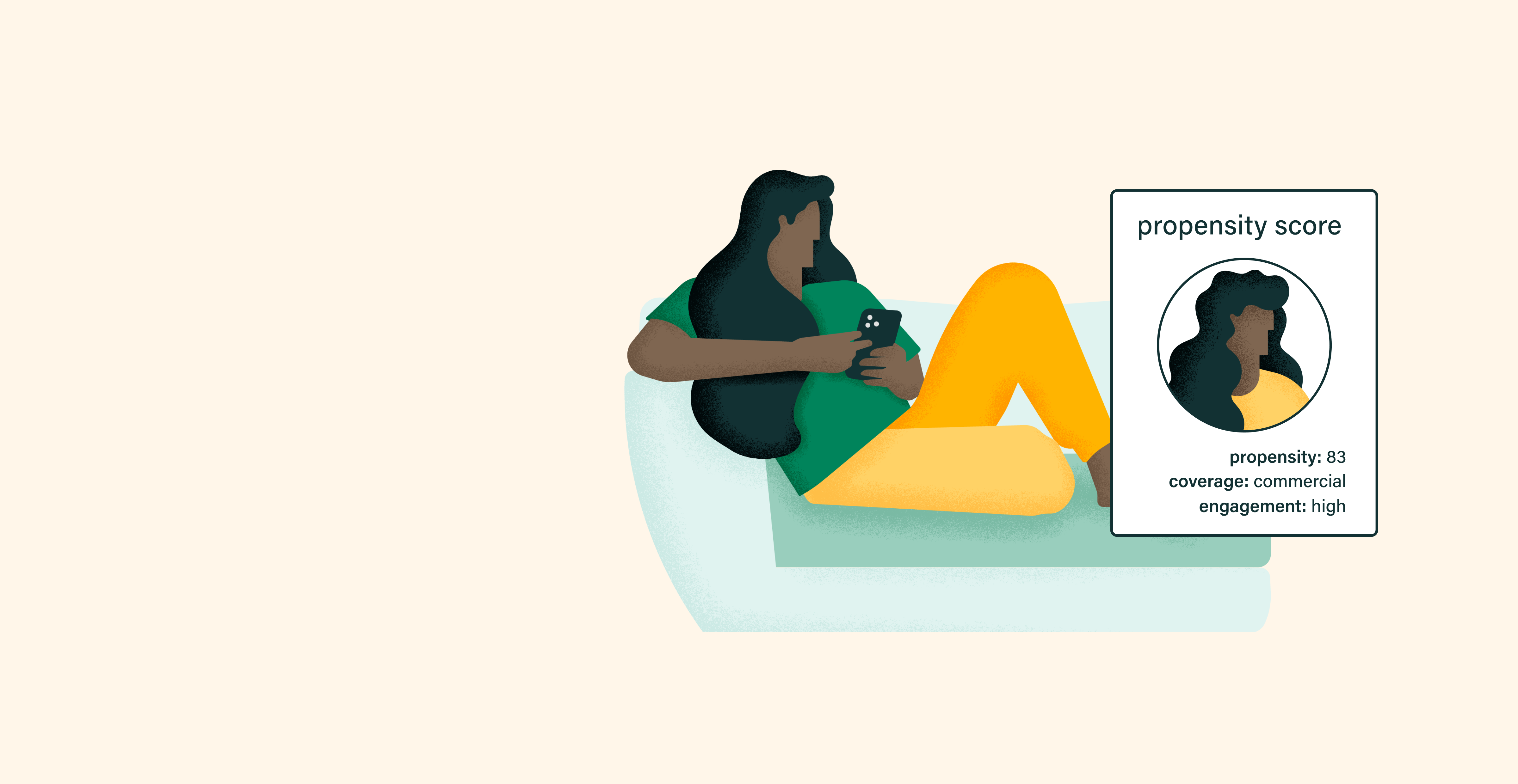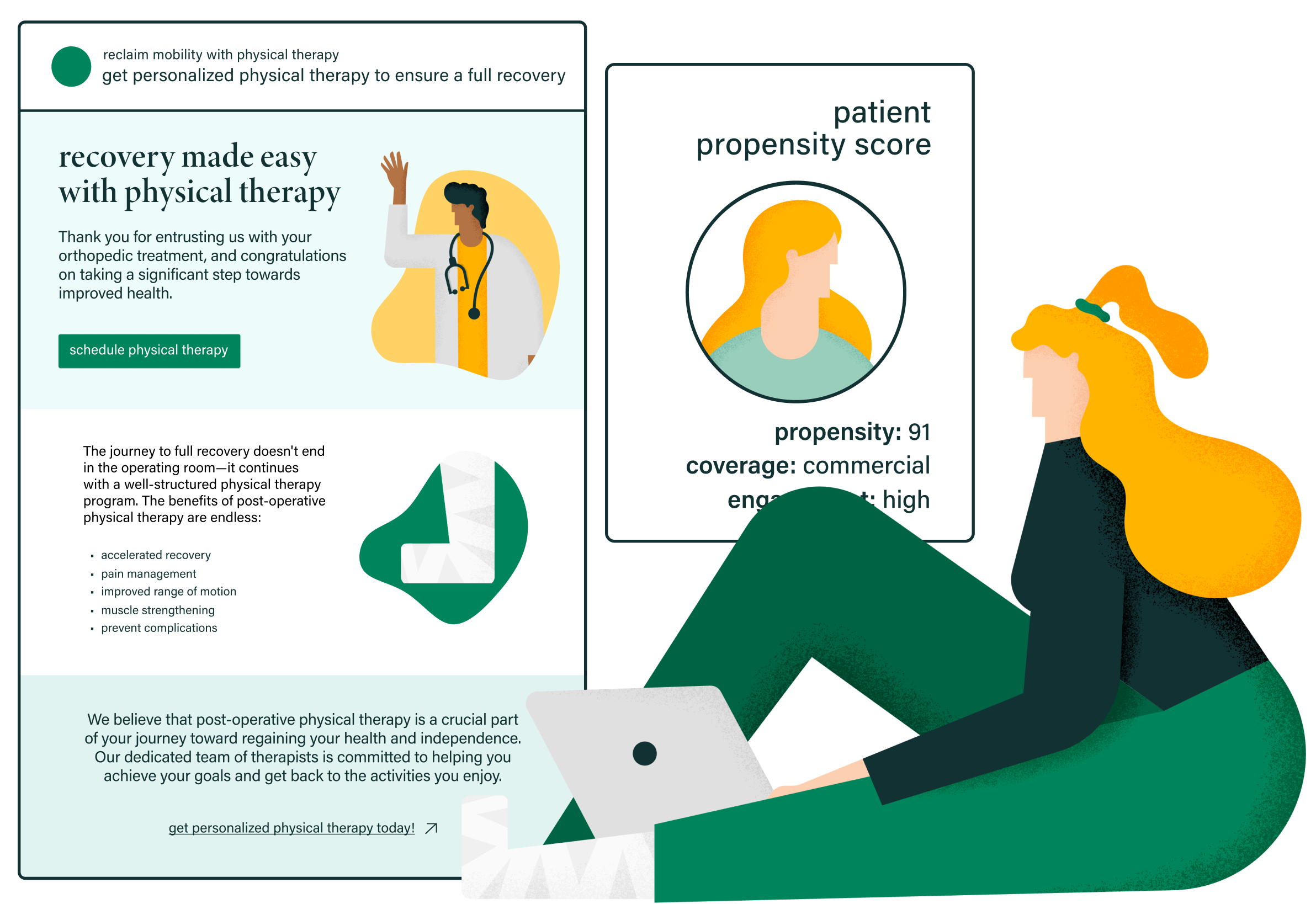healthcare crm+propensity scoring = patients who actually engage

Your CRM knows which patients need preventive screenings. Your campaigns reach them perfectly. So why aren't they responding? Here's what most organizations overlook: the tools to bridge this gap already exist.
When propensity scoring merges with CRM patients’ data, you stop guessing about timing. Instead, you recognize the digital signals- website visits, search patterns, content engagement that reveal when someone shifts from passive recipient to active health seeker.
The technology to orchestrate these perfectly timed touchpoints is already at your fingertips. The question is whether you'll keep broadcasting into the void or start having conversations when patients are actually ready to engage.
is crm data enough?
Most vertical agnostic CRMs simply do what they are supposed to do: they keep consumer data, monitor interactions, and allow for tailored campaigns. But possessing data and knowledge of how to use it are two separate hurdles. Your CRM may inform you that a patient is 55 years old, has commercial coverage, and resides in your service area. What it cannot inform you is whether or not the patient will indeed respond to your cardiology screening campaign.
Here is where legacy segmentation falls short. Demographics and clinical fit create large groups, but they don't account for the behavioral cues that really drive engagement. Two patients with the same profile in your CRM may have very different chances of booking preventive visits. One takes an active approach to their health, consistently uses the patient portal, and clicks on digital messages. The other only comes in for emergencies and hardly ever responds to outreach.
Without propensity scoring, your CRM is a smart filing cabinet; ordered and detailed, but ultimately reactive instead of predictive.
adding predictive intelligence to patient engagement
Propensity scoring enhances your healthcare CRM data by adding a predictive layer. It applies machine learning to spot patterns that people can't figure out. These models dig deep into the patient behavior over the years to find the faintest signals that indicate the patients' readiness to be engaged with certain services.
The first step in the process is loading the historical data into machine learning models. This would be everything that your CRM tracks- appointment trends, communication preferences, portal usage, response rates to campaigns, and clinical encounters. The models establish the connections between these behaviors and service utilization.
They can find out that patients who make appointments online and have followed two wellness visits in the past year are very likely to participate in preventive screenings. Or that patients who choose text communications and live near your facilities are more likely to complete referrals.
Such healthcare-focused platforms as Cured's HXP not only get the idea across but also go further, offering ready-made propensity scores for major service lines- cardiology, orthopedics, gastroenterology, and, in addition, general scores for lead evaluation or digital services enrollment.

orchestrating journeys that move at the speed of patient intent
The magic really comes to life when propensity scores drive omnichannel orchestration. Rather than reaching the same message via the same channel to everyone who passes minimum requirements, you're able to build smart journeys that adjust based on the probability a patient will engage and those they have expressed preferences for.
Think through how this works in practice. High-propensity patients for orthopedic care could get a direct scheduling path with easy appointment options front and center. Medium-propensity patients could get educational material on joint health and mobility first, raising awareness before asking to schedule. Low-propensity patients could be opted out altogether, maintaining their trust by avoiding bothering them with useless messages.
building your propensity-powered engagement strategy
The majority of healthcare entities may extend their present CRM setup by simply integrating some predictive functionalities, which neither replace the existing systems but rather enhance them.
It is, moreover, an experimental program that concentrates on only one service line that usually marks the start of the journey. To ascertain the de-identification and compliance, organizations put two or three years of past data into the machine learning models. The models get the training on real patient behaviors, thus they understand which patterns of engagement for your particular population have the highest likelihood.
This is where platforms like Cured's Healthcare Experience Platform (HXP) demonstrate their value. Rather than forcing healthcare marketers to piece together generic tools, HXP provides healthcare-specific propensity models that understand the nuances of patient behavior. The platform's proprietary machine learning models calibrate to your actual patient population and their historical consumption patterns, creating more accurate predictions than one-size-fits-all solutions.

why precision engagement is healthcare's future
Healthcare consumerism isn't slowing down. Patients increasingly expect the same level of personalization from their health system that they experience with other services. They wonder why their grocery store seems to understand their preferences better than their healthcare provider.
When combined with CRM data, propensity scoring is a way to move on. It allows healthcare organizations to genuinely offer personalized engagement on a large scale, thus meeting patients at the point of their health journey. Hence, it changes marketing from being just a numbers game to a precision instrument that enhances both patient experience and health outcomes.
your next steps
Cured’s HXP comes complete with the tools, pre-built AI models, and healthcare-enabling knowledge to make precision-engagement a reality. With capabilities including unified patient data, AI-generated propensity scores, and omnichannel journey orchestration, healthcare organizations can move from simply hoping that patients will engage to knowing that they will.



